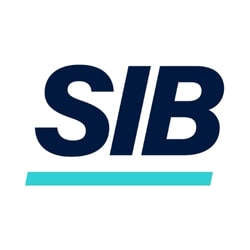Editor's note: Winston Post is principal of sales and use tax at Ryan, a Dallas, Texas-based tax software firm. He specializes in transaction tax issues affecting the tech industry. Ryan is the largest firm in the world exclusively dedicated to business taxes.
Recent high-profile tax disputes, including Apple's lawsuit challenging a $26 million tax bill from Florida's Department of Revenue, underscore a growing pressure for CFOs: accurately sourcing digital transactions for tax purposes. As businesses increasingly rely on Infrastructure as a Service (laaS) and cloud-based solutions, traditional tax compliance frameworks are struggling to keep pace with modern digital operations.
The stakes are substantial. With remote work driving enterprise cloud spending to new heights and states competing aggressively for tax revenue, CFOs face mounting pressure to correctly comply with tax obligations across multiple jurisdictions while managing an increasingly complex web of digital services.
Digital services growing tax puzzle
Consider this scenario: A California-based company sells digital subscriptions using servers housed in Washington state to customers in Florida whose own end-users are stretched across the country. Where should taxes be collected? The answer isn't simple and getting it wrong can prove costly.
States employ different sourcing methodologies that can dramatically affect tax liability:
For income tax purposes, most states now use market-based sourcing, directing revenue to where customers receive services. However, a growing number are implementing "customer's customer" sourcing, pushing taxation to the end-user's location — even when that differs from the actual purchaser.
Destination-based sourcing — sourced to where the buyer takes possession of the product — predominates in the area of sales tax, but complexity emerges when determining the true destination of cloud-delivered services. Is it the purchaser's headquarters, the server location or where end-users access and consume the service?
Multiple points of use
States increasingly recognize that enterprise software purchased in a company's headquarters may be accessed across multiple jurisdictions. In response, many allow Multiple Points of Use (MPU) exemptions, which allow companies to allocate tax based on actual usage patterns or allocations rather than procurement location.
While this sounds favorable, MPU creates new compliance burdens. Massachusetts has proposed expanded documentation requirements for businesses claiming MPU benefits, including detailed proof of operations inside and outside the state. Texas and Washington have updated their guidance, generally favoring taxpayers but creating new traps for bundled service transactions.
Federal intervention adds complexity
The Internal Revenue Service early this year issued proposed rules for sourcing cloud transaction income, adopting a service-based methodology that considers where resources and personnel responsible for service development and delivery are located. The proposal analyzes three factors: intangible property, personnel and tangible property contributions.
Industry groups have pushed back, particularly against including intellectual property factors in the calculation. For CFOs, this means federal and state sourcing requirements may diverge, potentially requiring dual compliance frameworks.
Real-world implications for Finance Leaders
These sourcing challenges create four immediate concerns for CFOs.
The first is increased audit risk. With states hungry for revenue, digital service sourcing has become a prime target for audits. Companies may face unexpected assessments years after the fact if sourcing methodologies are challenged.
The patchwork regime yields new system requirements: Accurate compliance may require sophisticated tracking of user locations, usage patterns, and service delivery points — capabilities most financial and tax management systems weren't designed to handle.
It also means more work around cost allocation for FP&A teams because understanding true geographic usage patterns becomes essential not just for tax compliance but for accurate cost allocation and profitability analysis.
Finally, finance chiefs must work with tech and tax vendors to apply appropriate exemption certificate documentation.
The sport betting model?
The trajectory is clear: sourcing requirements will become more granular and demanding. Sports betting companies already use sophisticated geolocation technology to comply with regulatory requirements — similar precision may soon be expected for tax purposes.
States are also showing increasing interest in digital service taxation, with several proposed taxes on data collection, digital advertising, and online platforms. As international jurisdictions implement their own digital service taxes, multinational companies face an increasingly complex compliance landscape.
Mapping the evolving revenue, tax footprint
CFOs should take proactive steps to address these challenges:
First, conduct a comprehensive review of current digital service arrangements to understand geographic footprints and potential sourcing exposures. This includes mapping where services are billed, accessed and consumed.
Second, implement systems capable of tracking usage patterns across jurisdictions. This may require coordination between IT infrastructure, tax and finance teams to ensure adequate data collection and reporting capabilities.
Third, establish clear vendor requirements for location-based usage data. Many laaS providers can log relevant data but may not generate it automatically.
CFOs who proactively address how tax systems are evolving to align with growing digital and cloud-based sources of revenue will be better positioned to manage both compliance risk and cost optimization in an increasingly digital world.




















